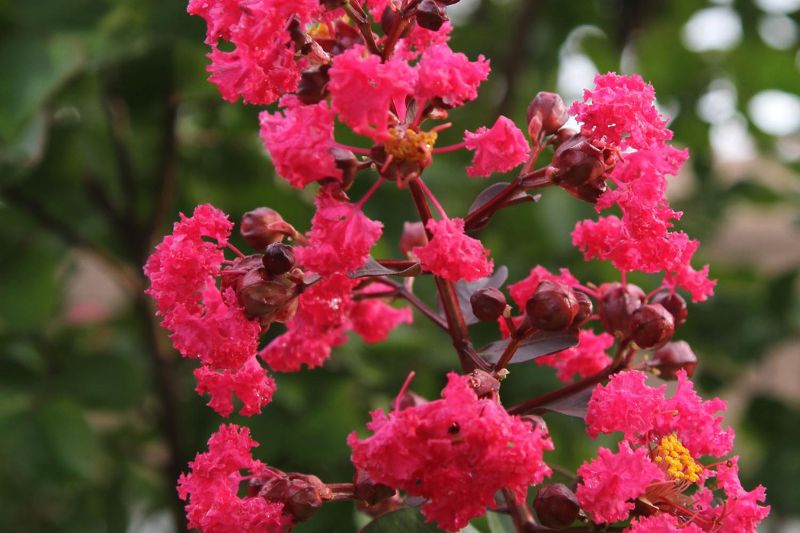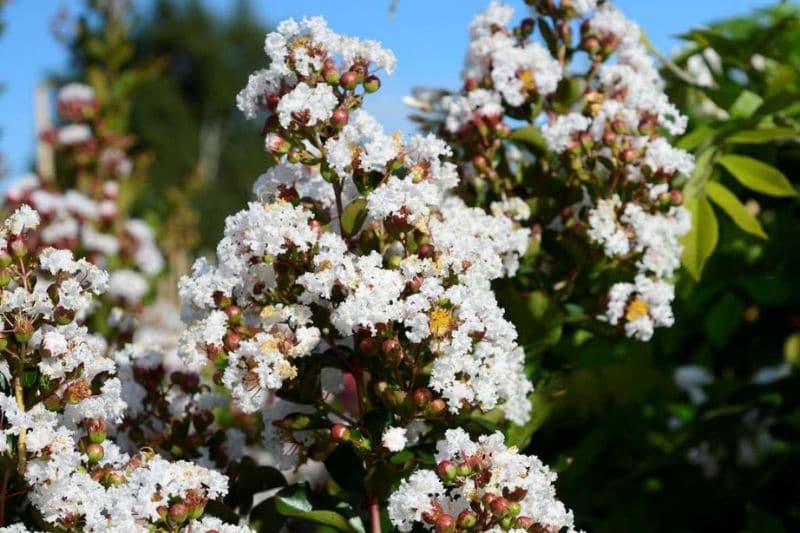Lagerstroemia or crape myrtle is a decorative bush prized for its magnificent summer flowering and its foliage that turns brilliant in autumn. If you already have one in your garden or have fallen for a particular variety, you can easily multiply it to obtain new young plants. Multiplication of crape myrtle can be done by sowing or propagation by cuttings. We explain everything!
Propagation by cuttings of crape myrtle
Propagation by cuttings is simplest technique and one we recommend to obtain new young plants. It consists of taking a shoot and getting it to root to produce a new young plant. This method preserves exact characteristics of parent plant, unlike sowing which can produce variations.
When to propagate Lagerstroemia by cuttings?
Ideal time to take cuttings of Lagerstroemia is late summer, from August onwards, when shoots become semi-lignified (that is, shoots of the year, partially lignified but still flexible). At this time they root more easily.
Materials needed
- A clean, sharp pruning shear
- Pots or buckets for growing
- A light growing medium, such as seed compost (or a mix of compost and sand)
- A plastic bag or a mini greenhouse to maintain humidity
- A plant hormone (facultative, but recommended to improve rooting)
Steps to propagate Lagerstroemia by cuttings
1- Choose a healthy shoot from the year, semi-lignified, about 10 to 15 cm long. Make sure the shoot has not yet flowered and that it has several nodes (nodes are where leaves grow). To increase chances of success, make at least 5 cuttings.
2- With a clean pruning shear, cut below a node (roots will emerge from here). Remove lower leaves leaving only 2 or 3 leaves at top of the shoot.
3- (optional) Dip cut end of the shoot in plant hormone. This stimulates rooting and increases success rate, but is not essential.
4- Fill pots with seed and potting compost or a light mix of compost and sand (50/50). Moisten (without waterlogging) compost with rain water.
5- Use a pencil to make a hole a few centimetres deep in substrate, then insert the shoot. Firm soil gently around cutting to ensure good contact.
6- To encourage rooting, maintain high humidity around cutting. To do this, cover pot with a transparent cloche (or half a plastic bottle) or with a clear plastic bag held by stakes. Careful: to avoid mould forming, foliage must not touch the wall.
7- Place pots in a bright spot, but out of direct sun. Check regularly that substrate stays moist, but never waterlogged.
8- After 4 to 6 weeks, roots will have started to take and you can then remove the cloche. You will know the cutting has taken when new shoots appear.
9- The following spring, you can pot up the cutting into a larger pot or plant it directly in open ground.
Sowing crape myrtle
Sowing is another multiplication method, but it takes longer. Also, this technique is less predictable, because seeds resulting from natural cross-breeding of flowers can produce plants with characteristics different from parent plant.
When to sow?
Seeds of Lagerstroemia can be sown in autumn, just after harvest. But for better success, it is best to store seeds for sowing the following spring.
How to harvest and store seeds?
1- Harvest seeds in autumn, around October–November, when fruits of Lagerstroemia begin to dry. Capsules will be brown and start to open naturally; this is sign seeds are ready to be harvested.
2- Leave capsules to dry a few more days in a dry, well-ventilated place. Once fully opened, carefully collect small seeds inside.
3- After harvest, store seeds in a dry place, protected from light and humidity. You can keep them in a paper envelope or kraft bag.
4- Optional: 5 to 6 weeks before sowing, place seeds in an airtight bag, then in a cold place (fridge or cold greenhouse) to simulate winter. This step is not obligatory, but markedly increases germination rate.
How to sow the seeds?
1- On eve of sowing: soak seeds overnight in a saucer of warm water at room temperature.
2- Fill your buckets or trays with seed compost or a mix of equal parts compost and sand.
3- Sow seeds on surface, then cover them lightly with compost.
4- Water gently and place pots in a bright spot, out of direct sun, ideally indoors, as crape myrtle seeds need a temperature between 20 and 24 °C to germinate. Germination can take 1 to 2 months, so be patient! Keep compost slightly moist, but not waterlogged.
Tip: To avoid damping-off during this long germination time, sprinkle a little charcoal on surface.
5- Once young plants have several leaves, pot them up individually and place them in a greenhouse. Planting out in garden will take place the following year. You will then need to wait 3 to 5 years before young plants obtained by sowing begin to flower.


































Comments